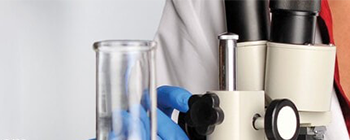Learn More
CD279 (PD-1) Monoclonal Antibody (J43), Biotin, eBioscience™, Invitrogen™
Armenian Hamster Monoclonal Antibody
$147.00 - $692.00
Specifications
| Antigen | CD279 (PD-1) |
|---|---|
| Clone | J43 |
| Concentration | 0.5 mg/mL |
| Applications | Flow Cytometry |
| Classification | Monoclonal |
Description
Description: The J43 monoclonal antibody reacts with mouse PD-1 (programmed death-1), a 55 kDa member of the Ig superfamily. PD-1 contains the immunoreceptor tyrosine-based inhibitory motif (ITIM) and plays a key role in peripheral tolerance and autoimmune disease in mice. PD-1 is expressed mainly on activated T and B lymphocytes. Two novel B7 Family members have been identified as PD-1 ligands, PD-L1 (B7-H1) and PD-L2 (B7-DC). Evidence reported to date suggests overlapping functions for these ligands and their constitutive expression on some normal tissues and upregulation on activated antigen-presenting cells. It is reported that J43 inhibits the binding of mouse PD-L1-Ig and mouse PD-L2-Ig to PD-1/BHK transfected cells. When administrated in vivo, both intact and Fab of J43 are reported to enhance contact hypersensitivity and exacerbate acute GVHD similar to transfer of PD-1-deficient cells. Injection of J43 also exacerbates EAE and NOD diabetes as do specific antibodies to mouse PD-L1 and PD-L2. Applications Reported: The J43 antibody has been reported for use in flow cytometric analysis. Applications Tested: The J43 antibody has been tested by flow cytometric analysis of Con A-simulated mouse splenocytes and mouse PD-1 transfected cells. This can be used at less than or equal to 0.25 μg per test. A test is defined as the amount (μg) of antibody that will stain a cell sample in a final volume of 100 μL.
Cell-mediated immune responses are initiated by T lymphocytes that are themselves stimulated by cognate peptides bound to MHC molecules on antig en-presenting cells (APC). T-cell activation is generally self-limited as activated T cells express receptors such as PD-1 (also known as PDCD-1) that mediate inhibitory signals from the APC. PD-1 can bind two different but related ligands, PDL-1 and PDL-2. Upon binding to either of these ligands, signals generated by PD-1 inhibit the activation of the immune response in the absence of "e;danger signals"e; such as LPS or other molecules associated with bacteria or other pathogens. Evidence for this is seen in PD1-null mice who exhibit hyperactivated immune systems and autoimmune diseases. Despite its predicted molecular weight, PD-1 often migrates at higher molecular weight in SDS-PAGE.Specifications
| CD279 (PD-1) | |
| 0.5 mg/mL | |
| Monoclonal | |
| Liquid | |
| RUO | |
| Q02242 | |
| Pdcd1 | |
| Primary | |
| 4° C, store in dark, DO NOT FREEZE! | |
| Pdcd1 |
| J43 | |
| Flow Cytometry | |
| Biotin | |
| Armenian Hamster | |
| Mouse | |
| 18566 | |
| IgG | |
| Affinity chromatography | |
| Antibody |
For Research Use Only.



